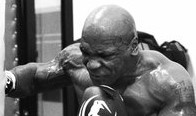An exercise program has three measures: frequency (how often you exercise), duration or time (how long you exercise) and intensity (how hard you exercise). It’s easy to measure frequency and duration, but how do you measure the intensity of your exercise program? There are three standard ways to measure exercise intensity: target heart rate, the “talk test,” and the Rate of Perceived Exertion (RPE).
Target Heart Rate: Target heart rate is the standard way to measure exercise intensity and the most objective. It’s also the hardest to do accurately.
First you have to determine what your target heart rate is. Subtract your age from 220; this gives you your maximum heart rate. Multiply that figure by 0.5(50%) to get the low side of your target heart range and by 0.7(70%) to get the upper range.
Example: For a 40 year old person, you would subtract 40 from 220.
220-40=180
Multiply by .5 to get the lower figure.
180X.5=90
Multiply by .7 to get the upper figure.
180X.7=126
The target heart rate is between 90 and 126.
When you exercise, you want to keep your heart rate between the two numbers of your target. During warm up and cool down, you want your heart rate to be close to the lower number, and during peak exercise, it should be close to the higher number. You are working too hard if your heart rate gets above the higher number, and not hard enough if it drops below the lower number.
The trick is taking your pulse (counting your heart rate) while you are exercising. You can feel you pulse at your wrist or throat. It’s not easy to accurately feel and count your pulse while exercising, though, so many people use a heart rate monitor instead.
It’s important to note that some health conditions and medications can affect your heart rate. In that case, check with your doctor about a target heart rate for you.
Talk Test
This is a more subjective measurement, but has been shown to be an accurate measurement of exercise intensity. You are exercising at a moderately intense level if you can talk without gasping, but you can’t sing.
Rate of Perceived Exertion
This is another subjective measurement. You do a self-check and determine, on a scale of 1-10, how hard you are working, with 1 being no exertion and 10 being maximum exertion. Moderately intense exercise is around 5-7. At this point, you will be sweating a little and feeling a little breathless.
When you are beginning to exercise, it can be helpful to use your target heart rate and one of the other methods to measure the intensity of your workout. You’ll learn what it feels like when your target heart rate is in the zone. Then you can use the other, more subjective methods, more accurately.
Monitoring the intensity of your workout is fun because you can see real improvement quickly. As you become fit, you’ll notice that you have to work harder to reach the same measure of intensity. You’ll have to walk faster to get your heart rate up. You’ll also start noticing that you’re not out of breath when you climb a flight of stairs or run to catch the bus.








Pingback: top cams